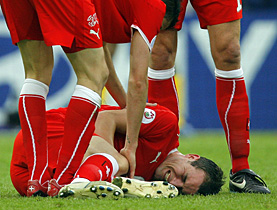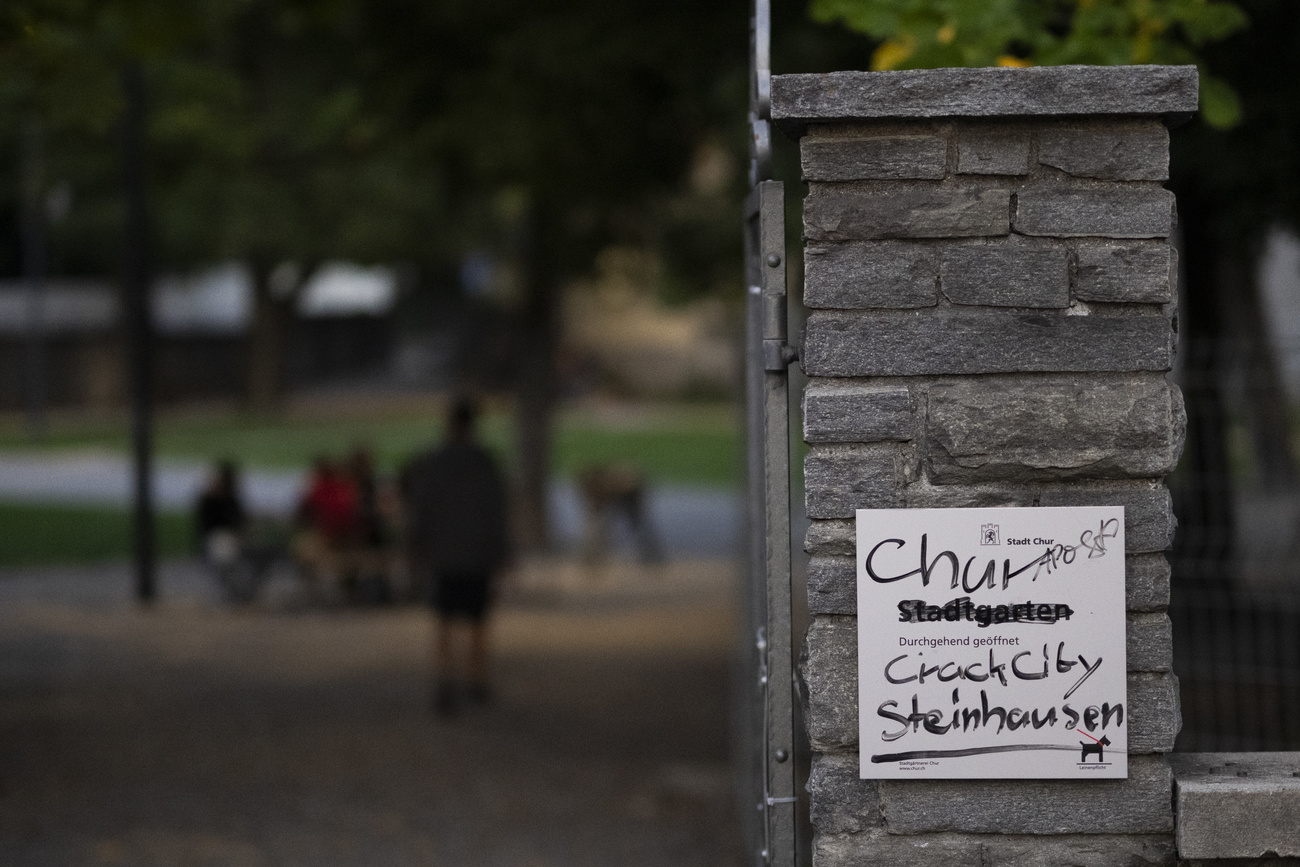New surgery offers hope for knee injuries

A Bern medical team has developed an exciting technique for treating anterior cruciate ligament (ACL) knee injuries, which often affect high-performing athletes.
Until now, ruptured ACLs have been treated with grafted tendon from another part of the body. The Bern University Hospital method could result in the patient’s own ACL growing back, more stability to the knee and a quicker recovery.
Few will forget the tears of Swiss football captain Alexander Frei during last year’s Euro 2008 football championships as he limped off the field during a match with the Czech Republic. Frei missed tearing his ACL by millimetres and was back in action after few months. Other athletes have not been so lucky.
It is estimated that every year around 7,000 footballers and skiers – professionals and amateurs – suffer a torn ACL. Rupturing this key, centrally situated knee ligament can mean that athletes are unable to play sport for up to nine months or even have to stop altogether.
“As soon as you lose your ACL, your knee becomes unstable,” Stefan Eggli, head of knee surgery in the hospital’s orthopaedic centre, told swissinfo.ch.
“Especially in young sporty patients, this instability will destroy their cartilage and meniscus, and after two to five years we already see the first damage to their knees.”
Surgery problems
The condition is normally treated with a donor ligament. But this tissue, because it is removed from its original surroundings, is effectively dead when it arrives in the knee.
A normal ACL acts like an antenna, collecting information about where the knee is going. This changes after surgery.
“Sporty patients often come back and say the knee is stable but it’s not the same as before and that they don’t feel it as well. They often have other accidents,” said Eggli.
Tissue needs preconditions for healing, which is why bones are immobilised in plaster casts. But the knee cannot be treated the same way because although the ACL would probably heal, the knee would be stiff, he said.
To combat this problem, the team devised a mechanism, made up of a screw with a spring inside, which is placed into the tibia or shinbone. This stabilises the torn ligament at the right position for it to heal, but doesn’t affect mobility.
“You can still move around and walk normally and with this implant the knee is not unstable anymore,” Eggli explained.
Healing boost
Eggli also realised that ACL healing was initiated by a blood clot formed at the rupture site. By taking a certain amount of the patient’s blood and putting it in a centrifuge, a clot the size of the torn ligament was produced. This was placed at the rupture site, giving an additional boost to the healing process.
The researchers have tested the new procedure on sheep with a more than 90 per cent success rate. They now have the go-ahead to try it on humans.
This would mean that surgery would only take a day, compared with the three-day hospital stay for the conventional method. Healing is also faster. Eggli estimates that it would take six weeks for the ligament to grow, plus another six for an athlete to get back into sporting shape.
But he says that his personal goal does not necessarily concern athletes. His aim is to restore mobility to all patients and to study if the propensity to arthritis, higher among conventionally treated ACL patients, can be decreased with the new technique.
Lessons from the US
The Swiss team are not the only pioneers in the field. Richard Steadman in the United States has developed a microfracture technique which works by bringing stem cells through small fractures into the region of the tear. US skier Bode Miller is among the athletes he has treated.
Eggli said that knee specialists had learned a lot from Steadman, but that his “healing response” procedure had only worked in up to 25 people in the past six to seven years and is only suitable for a small group of patients.
“That’s the reason we combined. We don’t do the healing response as we have the blood clot, which is a better way to improve this healing, and we have the screw spring mechanism which gives stability back to the knee,” he said.
Test patients at Bern University Hospital will be monitored carefully. Eggli should know by the end of the year if his technique has been a success.
Only then would he recommend it to other surgeons. “If it works really as we are hoping, and until now the results have been quite good, it will probably change knee surgery quite significantly,” he said.
Isobel Leybold-Johnson, swissinfo.ch
The knee contains four ligaments that connect the thighbone (femur) to the shinbone (tibia). These ligaments hold the bones in place and help control the way your knee moves.
There are two side ligaments and two that are inside the knee, which cross each other. The ACL is one of these ligaments.
The ACL ligament crosses the other ligament from the thighbone to connect to the shinbone near the front. The ACL acts as an antenna about the direction that your knee is going.
An ACL becomes torn when it’s stretched beyond its normal range of elasticity. It usually occurs during exercise or sports, with footballers and skiers among the most affected.
Women tend to suffer more from the injury, but the exact reason is not known. It could be to do with anatomy, hormones or strength.
The symptoms are feeling or hearing a pop inside the knee, great pain and swelling. The knee may feel wobbly when a person tries to stand.

In compliance with the JTI standards
More: SWI swissinfo.ch certified by the Journalism Trust Initiative










You can find an overview of ongoing debates with our journalists here . Please join us!
If you want to start a conversation about a topic raised in this article or want to report factual errors, email us at english@swissinfo.ch.